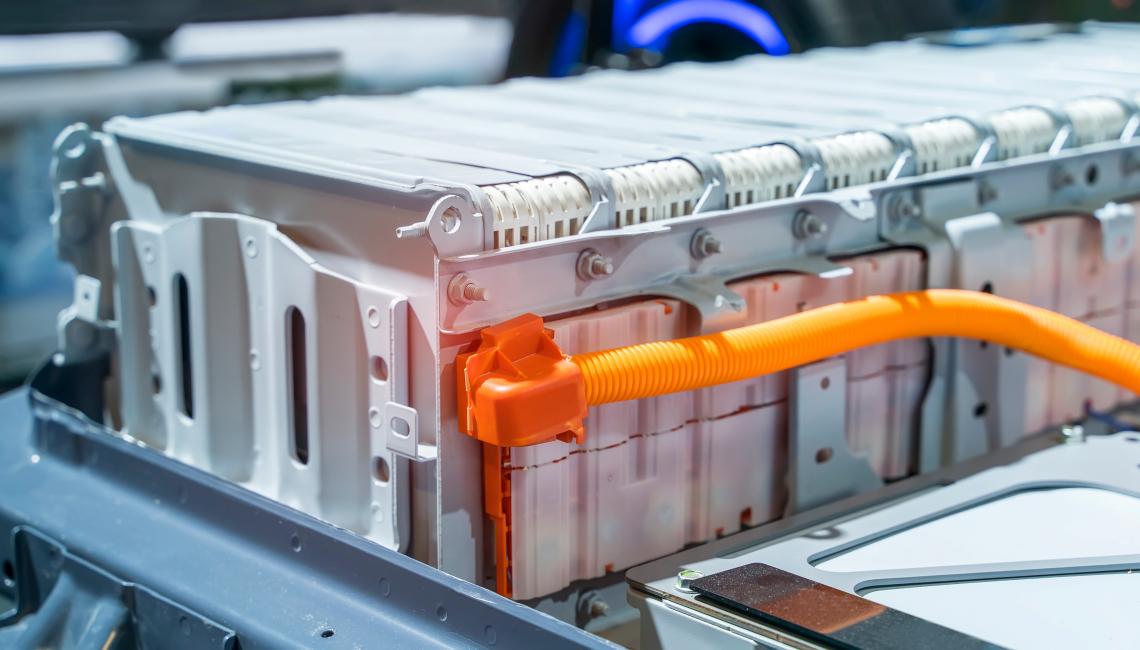Scientists from DGIST find the solution to a chronic concern in the energy field: what happens when you dilute high concentration electrolyte on lithium metal battery cycling?
Researchers from DGIST demonstrated lithium battery cycling over a wide range of temperatures (2-60°C) by adopting a new dilution technique for high concentration electrolytes. The study insights could prove useful for development of e-vehicle batteries.
Researchers from Daegu Gyeongbuk Institute of Science and Technology investigate the impact of high concentration electrolyte (HCE) dilution on lithium metal battery (LMB) cycling over a wide temperature. Their comprehensive study reveals that dilution of HCE significantly improves Li+ ion transport at lower temperatures and thermal stability of solid-electrolyte interface at higher temperatures, thereby increasing the cycling performance of LMBs. Their strategy and fundamental findings can be useful for building high-energy batteries for electric vehicles.
Most of us spend a lot of time sitting around charging points charging our phones, tablets, and laptops. Lithium-ion batteries that power these devices often take too long to recharge. So, using these batteries becomes a challenge when designing electric vehicles that demand quick charge and long discharge periods. Li-metal batteries (LMBs) on the other hand have very high energy density and require a fraction of time to charge when compared to their Li-ion counterparts.
Yet, LMBs are far from being the perfect battery solution. They suffer from low current efficiency, poor cyclability and are prone to Li-dendrite formation — excess Li deposition on the electrodes. Scientists have found that using high salt concentration electrolytes (HCE) diluted with ether-based solvents can solve these problems and improve performance. However, a proper understanding of how HCE dilution affects the working of LMBs over a wide range of working temperatures is still a lingering question.
In a recent study published in Chemical Engineering Journal, a research team led by Prof Hongkyung Lee and Hochun Lee from Daegu Gyeongbuk Institute of Science and Technology took up the task of understanding the effect of HCE dilution on LMB cyclic over a wide range of temperatures. Prof Hongkyung Lee explains, “The electrolyte-deterministic interfacial stability is a crucial concern for securing battery performances. This work provides a rational strategy for diluting high-concentration electrolytes to stabilize a highly reactive Li surface. The findings in this study can offer the clues to design electrolyte microstructure, identify its fundamental impact on the interfacial stability over a wide temperature range, and contribute toward stable cycling of Li-metal batteries in practice.”
HCEs are often vicious and diluting them can increase the ion migration within the cell and improve wetting of electrodes. The team adopted a new HCE dilution technique that allowed them to demonstrate good LMB cycling performance at temperatures between 2–60°C. To study conducted a comparative electrochemical analysis of a model HCE well as an HCE diluted with 1,1,2,2-tetrafluoroethyl 2,2,3,3-tetrafluoropropyl ether (TTE).
The experimental results indicated that TTE dilution significantly improved Li+ ion transport and reduced dendritic Li plating at low temperatures, which is essential for maintaining cycling stability. TTE was also found to be responsible for the formation of the thermally stable solid-electrolyte interface that determines the high-temperature cycling ability of LMBs. The comprehensive analysis also revealed that TTE dilution could also prove beneficial for the high voltage cycling of Li cells.
The Li-metal is considered as an ultimate anode for next-generation batteries. Prof Lee states, “With our research, we tried to reinforce the development of longer-cycling, higher-energy density batteries without sacrificing the charging rate, which is a prerequisite of electric vehicles that have longer mileage.” The insights from this study can be applied to design small and light but efficient batteries with long-term cycling stability that can act as power sources for drones, walking robots, and physical augmentation.
Reference
|
Authors: |
Kisung Park a,1, Youngseong Jo a,1, Bonhyeop Koo a, Hongkyung Lee a,b, Hochun Lee a,b |
|
Title of original paper: |
Wide temperature cycling of Li-metal batteries with hydrofluoroether dilution of high-concentration electrolyte |
|
Journal: |
Chemical Engineering Journal |
|
DOI: |
10.1016/j.cej.2021.131889 |
|
Affiliations: |
aDepartment of Energy Science and Engineering, Daegu Gyeongbuk Institute of Science and Technology (DGIST), Republic of Korea b Energy Science and Engineering Research Center, DGIST, Republic of Korea |
*Corresponding author’s email: [email protected] (H. Lee), [email protected] (H. Lee).
About Daegu Gyeongbuk Institute of Science and Technology (DGIST)
Daegu Gyeongbuk Institute of Science and Technology (DGIST) is a well-known and respected research institute located in Daegu, Republic of Korea. Established in 2004 by the Korean Government, the main aim of DGIST is to promote national science and technology, as well as to boost the local economy.
With a vision of “Changing the world through convergence", DGIST has undertaken a wide range of research in various fields of science and technology. DGIST has embraced a multidisciplinary approach to research and undertaken intensive studies in some of today's most vital fields. DGIST also has state-of-the-art-infrastructure to enable cutting-edge research in materials science, robotics, cognitive sciences, and communication engineering.
Website: https://www.dgist.ac.kr/en/html/sub01/010204.html
About the authors
Dr. Hochun Lee is a professor in Energy Science and Engineering at DGIST. Previously, he worked at LG Energy Solution for seven years, developing functional electrolytes for commercial Li-ion batteries. In DGIST, he is elucidating the correlation of the microstructure of the electrolytes with the battery performance.
Dr. Hongkyung Lee is currently an assistant professor in Energy Science and Engineering at DGIST. He contributed to the Battery500 consortium where he worked on prototyping practical Li-metal pouch cells. His research interests include a dendrite-free electroplating of high-capacity metallic anodes, fast-charging Li-ion, real-time diagnosis of battery failures, and more.



